Whether you’re a commercial or home cheesemaker, you will need four basic ingredients to make cheese: milk, salt, culture and rennet. Most of you will be familiar with the first three. Let’s talk about the fourth one. Read on to learn about the history of rennet in cheesemaking and discover the different types of rennet you can use to make cheese.
SEE ALSO: The four essential ingredients you need to make cheese →
What is rennet?
Let’s get this under way with some basics. To make cheese, you need to coagulate milk. And the ingredient most commonly used to coagulate milk is rennet. Traditionally, cheesemakers would use an enzyme called chymosin as their rennet.
As for the actual word itself, rennet is believed to be derived from the Old English word rynet, which means “cause to run together”. This is most probably a reference to how it makes milk run or curdle. Furthermore, chymosin is also known as rennin due to its use as rennet.
Where does chymosin come from?
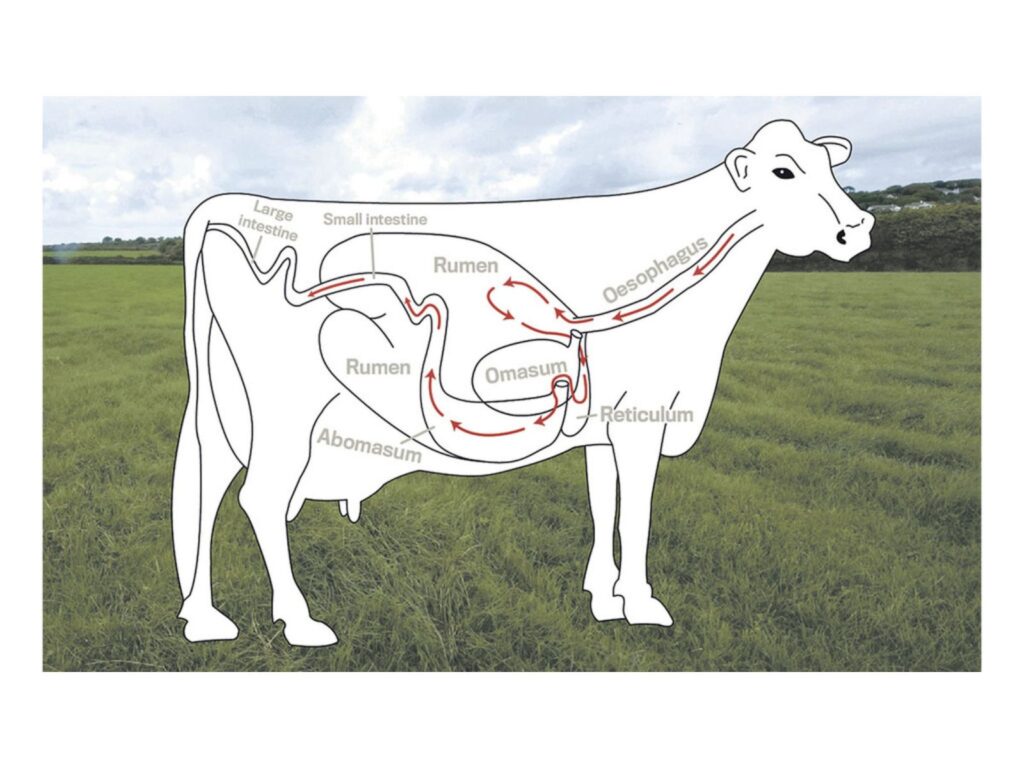
In the old cheese world, the most common source of chymosin was the fourth stomach (abomasum) of a young ruminant animal. But the abomasum is not the only source of chymosin. Indeed, chymosin can also be derived from microbial sources. And the enzymes cyprosin and cardosin, which have a similar coagulant effect, can come from plant-based sources. We’ll get back to that a little bit later.
How does rennet work?
In simple terms, rennet works by breaking down the casein protein chains in milk into smaller protein fragments. As a result, this creates a coagulated mass (the curd) and leaves behind a liquid portion (the whey). The curd contains most of the casein protein and fat from the milk. On the other hand, the whey is rich in whey protein, lactose and other minerals.
While the majority of cheeses are made using the curd (e.g., Cheddar, Gouda and Parmigiano Reggiano), there are still a number of very popular cheeses that can be made with whey. Without a doubt, the most famous example is Ricotta.
The type and amount of rennet used, as well as the acidity of the milk and the temperature of the cheesemaking environment, all play a role in determining the final texture and flavour of the cheese. By controlling these factors, cheesemakers can produce a wide variety of cheeses with a range of textures, flavours, and aromas.
The evolution of rennet
Actually, the use of rennet in cheesemaking dates back thousands of years, with evidence of cheesemaking found in ancient civilizations such as the Egyptians and Greeks. In traditional cheesemaking practices, artisans and farmers used either animal (e.g., calf) or plant-based (e.g., cardoon thistle) rennet to make their cheese.
As cheesemaking became more industrialised, rennet began to be produced through microbial fermentation, allowing for a more consistent and scalable supply. Today, rennet can be derived from animal, plant or microbial sources, with some cheesemakers opting for non-animal rennet for ethical or religious reasons.
Overall, rennet remains a crucial component in the cheesemaking process and has played a significant role in the history and evolution of cheese production. Now, let’s take a closer look at the different types of rennet.
Different types of rennet
As we’ve mentioned above, the rennet used in cheesemaking can come from various sources.
Animal rennet
Animal rennet is the most common traditional source of the enzymes used in cheesemaking. And it is typically derived from the stomachs of young ruminants. The abomasum is the fourth and final compartment of a ruminant animal’s stomach, and is considered its true or “natural” stomach.
In ruminants, such as cows, goats, and sheep, the abomasum is responsible for secreting digestive enzymes and acids to break down food and prepare it for absorption into the animal’s bloodstream. Although animal rennet is effective, it raises ethical and environmental concerns, as well as being unsuitable for use in vegetarian cheesemaking.
Plant-based rennet
Also, certain plants can provide alternative sources of the enzymes used in cheesemaking. Some great examples are Cardoon Thistle, Fig, or Caper leaves. As a matter of fact, cheesemakers in the Iberian Peninsula and other parts of Europe have been using plant-based rennet for generations.
Presently, they are becoming more popular as a vegetarian alternative to traditional animal-derived rennet. However, the quality and consistency of plant-based rennet can vary and they may not be as effective as animal-derived rennet, so it is important to use caution and seek advice from a cheesemaking expert before using plant-based rennet.
You can read more about plant-based rennet in our comprehensive guide here.
Microbial rennet
Moulds such as Rhizomucor miehei can produce proteolytic enzymes, which are then concentrated and purified in a fermenter to eliminate contaminants. The traditional belief was that these coagulants caused bitterness and reduced cheese yield, especially with long-term aging.
However, advancements in microbial coagulants, due to better characterization and purification of secondary enzymes, have resulted in the production of high-quality cheeses using microbial rennet.
Genetically-modified (GMO) rennet
The fourth and final type of rennet is actually the most commonly used coagulant in modern cheesemaking. Indeed, about 90% of commercial cheeses produced in the USA use a GMO rennet called Fermentation Produced Chymosin (FPC). Overall, the main reason for this is that GMO FPC rennet produces the most consistent and highest yield of cheese from milk.
To make GMO rennet, lab scientists isolate the chymosin-producing gene (RNA) in animal rennet and transpose it into bacteria or fungi. Different companies use genes from different sources and put them in different bacteria. As a result, some (but not all) FPC is suitable for vegetarians.
You can read more about GMO microbial rennet in our complete guide here.
Where can I buy rennet from?
Rennet can be purchased from several sources, including:
Specialty cheesemaking stores
These stores specialise in supplying equipment, ingredients, and supplies for cheesemaking and typically carry a variety of rennet options. Some examples include New England Cheesemaking Supply Company and Little Green Cheese.
Online retailers
Online retailers, such as Amazon, offer a wide selection of rennet products for home cheesemakers and commercial cheesemakers.
Local dairy supply stores
Some local dairy supply stores may carry rennet products and can be a good source for home cheesemakers in need of smaller quantities.
Direct from manufacturers
Some rennet manufacturers sell directly to cheese-makers and may offer a variety of rennet products in bulk or smaller quantities.
Which type of rennet should I use?
The type of rennet used in cheesemaking can have a significant impact on the flavour, texture, and coagulation properties of the cheese. When choosing which type of rennet to use, consider the following factors:
Cheese type
Different types of cheese may require different types of rennet, so it is important to choose the appropriate rennet for the desired cheese. For example, traditional, animal-derived rennet may be best suited for traditional, pressed cheeses such as Cheddar, while microbial or plant-based rennet may be best suited for softer, unripened cheeses like Mozzarella and Feta.
Personal preferences
Some people prefer to avoid animal-derived rennet for ethical or religious reasons and may choose to use microbial or plant-based rennet instead.
Flavour
Different types of rennet can have different effects on the flavour of the cheese. For example, animal-derived rennet may result in a stronger, tangier flavour, while plant-based rennet may result in a subtle bitterness.
Cheesemaking style
Finally, the type of rennet used may also depend on the cheesemaking style. For example, commercial cheesemakers may prefer to use FPC rennet for its consistent and reliable results. On the other hand, traditional cheesemakers may prefer animal-derived rennet for its traditional flavour and coagulation properties.
Liquid vs dry rennet
Liquid rennet and powder rennet are two forms of rennet that are used in cheesemaking. The main difference between the two forms is their composition and method of preparation.
Liquid rennet
Liquid rennet is a solution that contains rennet enzymes suspended in a liquid medium, such as water or whey. Furthermore, this type of rennet is ready to use and can be added directly to the milk without any further preparation. Because of this, it is generally preferred by home cheesemakers. Indeed, liquid rennet is easy to measure and use.
Dry rennet
Dry rennet (powder or tablet) is a form of rennet that has been dried and processed into a powder form. It must be rehydrated before use, typically by dissolving it in a small amount of unchlorinated water. Powder rennet has a longer shelf-life than liquid rennet, making it a good option for commercial cheesemakers, but it can be more difficult to measure and use than liquid rennet.
Both forms of rennet can produce similar results in cheesemaking, but the specific type of rennet that is best suited for a particular cheesemaking project will depend on personal preferences and the desired outcome in terms of flavour, texture, and coagulation properties.
How should I store my rennet?
The storage conditions for rennet will vary depending on the form of rennet (liquid or dry) and the manufacturer’s instructions. Here are some general guidelines for storing rennet:
Storing liquid rennet
Liquid rennet should be stored in the refrigerator and should be used within the expiration date printed on the packaging. If stored properly, liquid rennet can have a shelf-life of several months.
Storing dry rennet
Powder rennet should be stored in a cool, dry place, away from light and moisture. The packaging should specify the shelf-life of the rennet, which can be several years if stored properly. Be sure to read the manufacturer’s instructions because storage recommendations can vary from one brand to another.
Regardless of the form of rennet, it is important to keep rennet away from heat and moisture, as these can degrade the rennet enzymes and reduce their effectiveness. Also, it’s important to use clean utensils when measuring and handling rennet to avoid contamination. If you’re unsure about the storage conditions for your particular type of rennet, refer to the manufacturer’s instructions or contact the manufacturer for more information.
How long can I keep my rennet for?
The shelf-life of rennet depends on the type of rennet and the storage conditions. Here are some general guidelines:
Liquid rennet shelf-life
Liquid rennet should be used within the expiration date printed on the packaging, which is typically several months. Proper storage in the refrigerator is important to maintain the potency of the rennet enzymes.
Powder rennet shelf-life
Powder rennet can have a longer shelf-life, ranging from several years to several decades, depending on the manufacturer and the storage conditions. Proper storage in a cool, dry place, away from light and moisture, is important to maintain the potency of the rennet enzymes.
It’s important to note that over time, the potency of the rennet enzymes may decrease, even with proper storage, which can affect the coagulation properties of the rennet and the resulting cheese. If you’re unsure about the shelf-life of your particular type of rennet, refer to the manufacturer’s instructions or contact the manufacturer for more information.
Examples of cheeses
Animal rennet
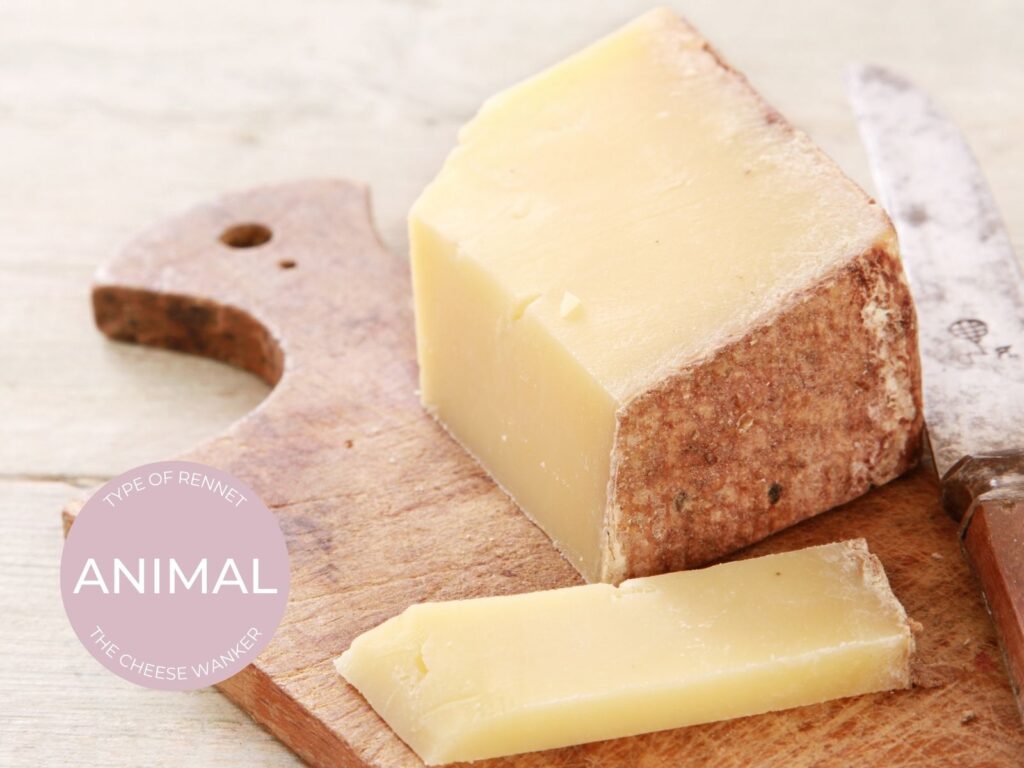
Most traditional cheeses throughout Europe are made using calf or goat rennet. Classic examples include West Country Farmhouse Cheddar, Brie de Meaux, Gorgonzola and Gruyère.
Plant-based rennet
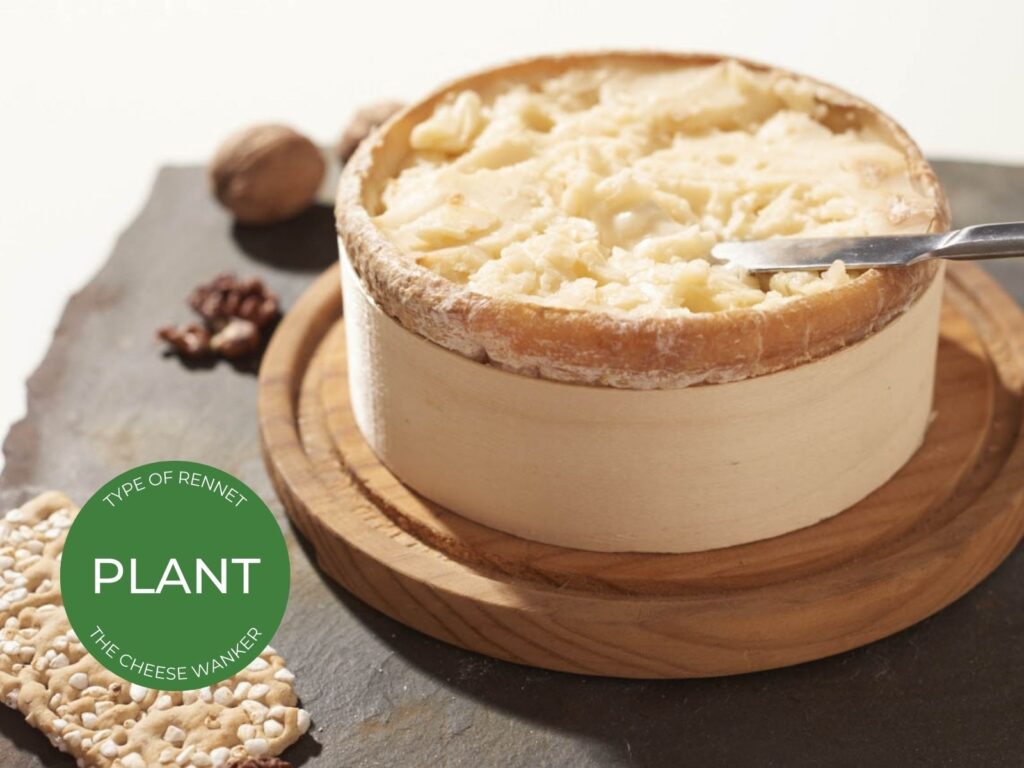
Cheeses in this category include popular Spanish cheeses such as Torta del Casar and Irish blue cheese Cashel Blue.
Microbial rennet
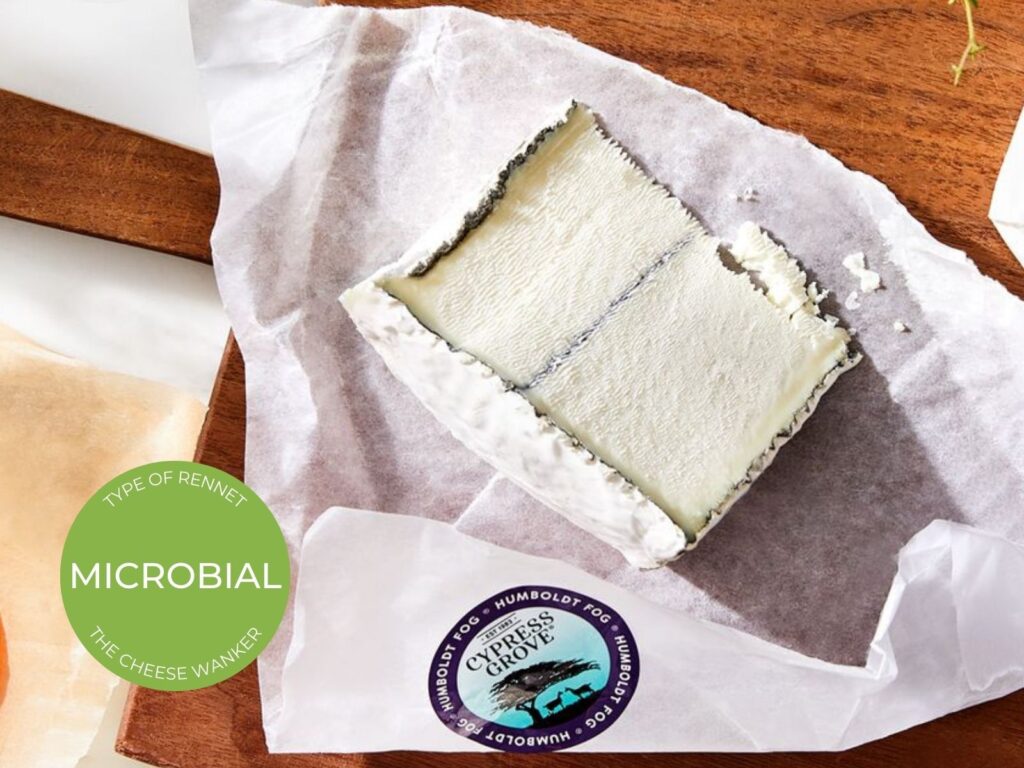
Modern classics Rogue River Blue and Humboldt Fog are made using microbial rennet.
Rennet-free
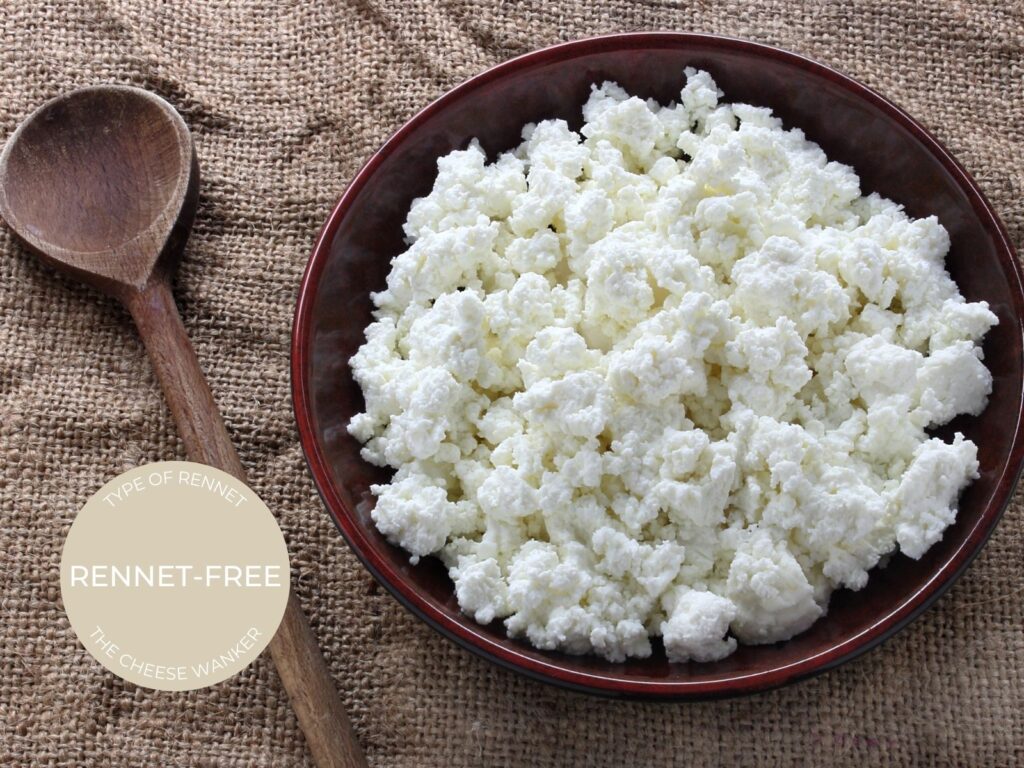
Some alternatives to rennet include acids (e.g., vinegar) or specific cultures. Some great examples of rennet-free cheeses are Cream Cheese, Cottage Cheese and Ricotta.
Rennet FAQs
Let’s finish up our guide to rennet with some of your most commonly asked questions.
What does rennet taste like?
Rennet itself does not have a taste or flavour. The purpose of rennet in cheesemaking is to coagulate the milk and form curds. Having said that, the final taste and flavour of a cheese are influenced by many factors such as the type of milk used, the choice of rennet, the starter culture used and other ingredients present in the recipe.
Is microbial rennet vegetarian?
Yes, some types of microbial rennet are considered vegetarian. Microbial rennet is a type of rennet that is produced by the use of microorganisms such as fungi or bacteria, rather than animal rennet which is derived from the stomachs of young ruminants such as calves, goats, and sheep.
Does rennet have salt in it?
There is a small amount of salt in most commercial rennet for the purpose of preservation. Because it is present in minute amounts, it does not usually influence the final qualities in the cheese.
How do you reconstitute dry rennet?
To reconstitute dry rennet, you will need to mix it with a small amount of cool, non-chlorinated water. The exact proportions will depend on the specific type of rennet you are using, so it is important to follow the instructions provided by the manufacturer.
In general, you will add a small amount of water to the rennet powder, usually 1 to 2 teaspoons, and stir until the powder has completely dissolved. The reconstituted rennet should then be mixed into the milk that you are using to make cheese, again following the instructions provided by the manufacturer.
Conclusion: rennet is an essential ingredient in cheesemaking
Thank you for reading our post on rennet in cheesemaking. As you can see, we have been using animal and plant rennet for generations. However, more recently, microbial rennet has appeared on the scene. And it is now the dominant form of coagulant used in commercial cheesemaking. What’s your favourite type of rennet to use when making cheese? Let me know in the comments.
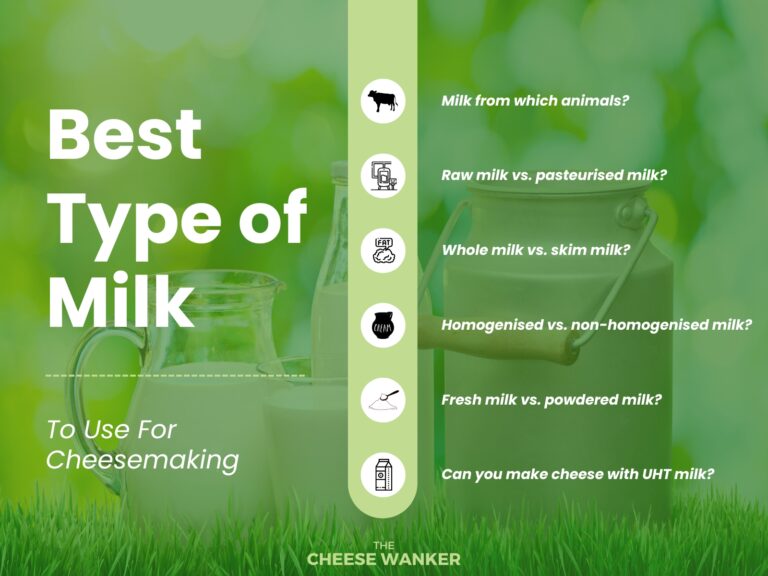
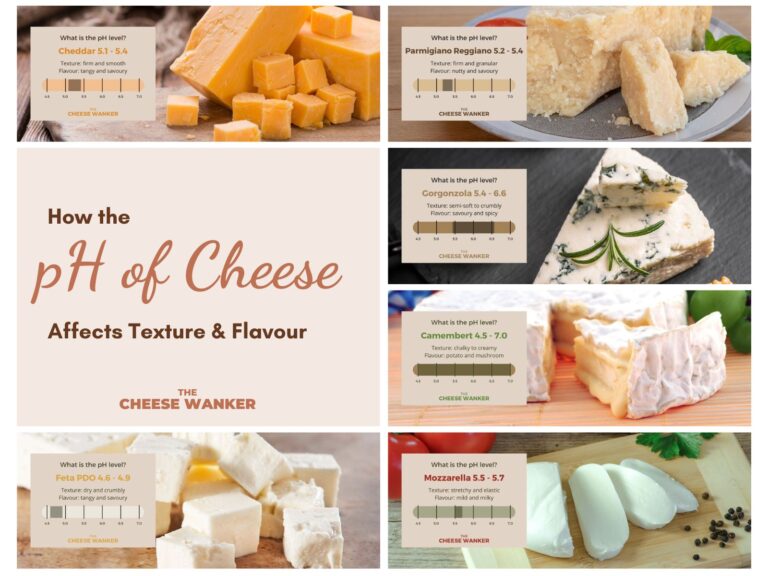
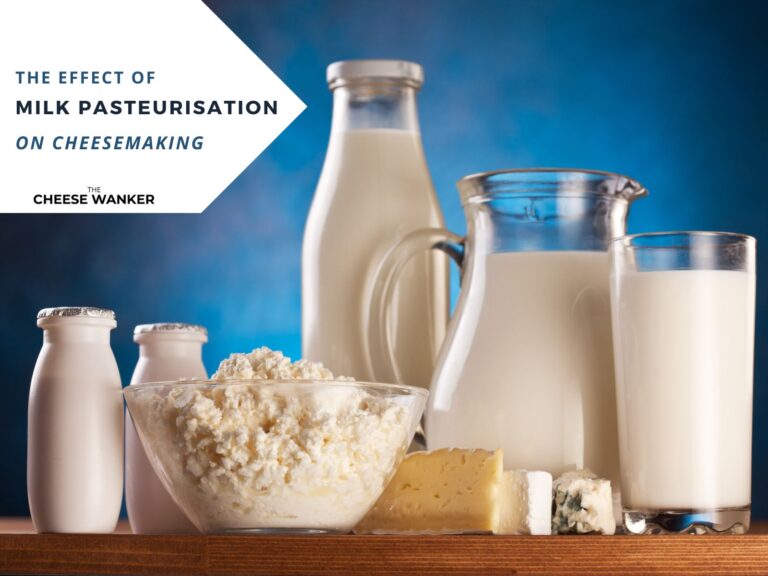
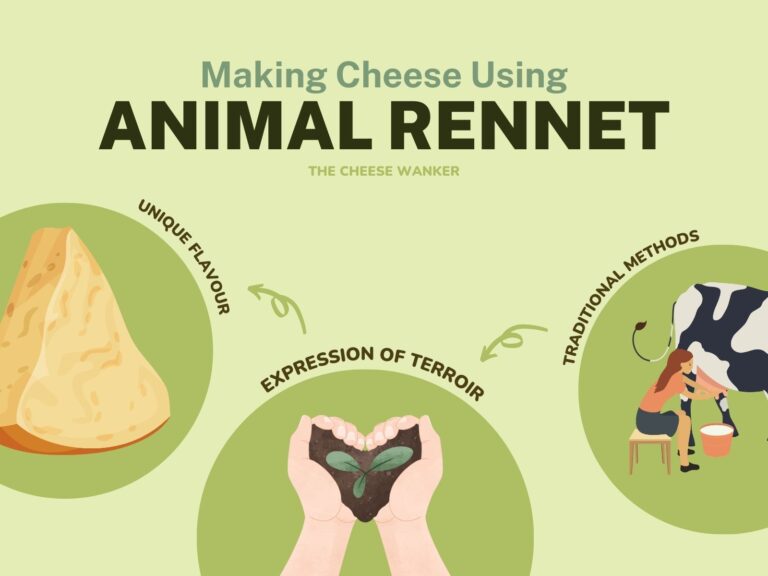
I had no idea that I was feeding myself and children GMO cheese all these decades in the USA. I am so glad your site exists to help us understand the process and inform of us of information we didn’t have so we can make our own choices. I WILL BE MAKING MY OWN CHEESE, FROM NOW ON…Thank you.